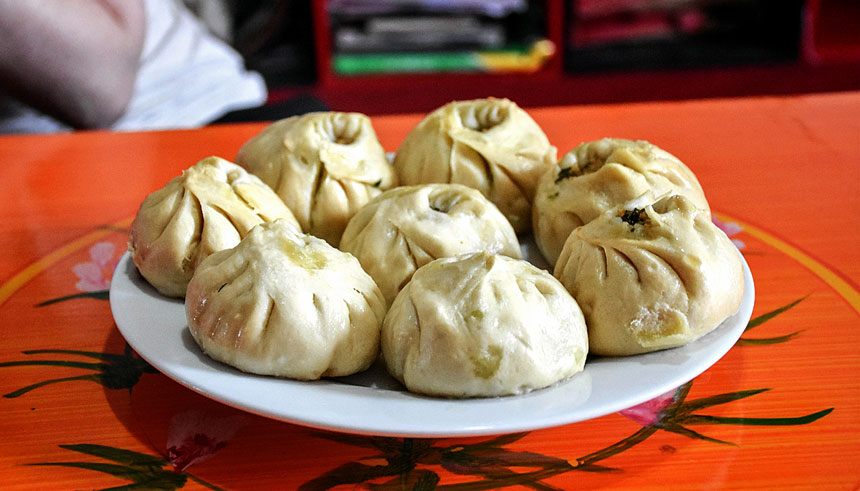East West Lifestyle
Recipes of Asia: Tibetan Cheese Buns from Qinghai
By Clarissa Wei

Food blogger Clarissa Wei tries steamed yak-cheese buns in Qinghai Province.
Dhundrup* stoops down and starts kneading dough in the kitchen.
“What’s he doing?” I ask Amelia*.
“Making dumplings,” she says, smiling. “He’s a great cook.”
I am in Xining, the capital of the Qinghai province of China, and Amelia is my host. She’s an American—a friend of a friend who has been living here for years now, and Dhundrup is her boyfriend.

Qinghai, located on the northwest side of China, is an odd province and unlike any other I’ve been to. Its borders were drawn, quite arbitrarily, in the late 1920s. The demographics of the area are some of the most diverse in China; there are over 37 recognized ethnic groups. Han Chinese, of course, is the dominant, followed by Tibetan, Hui, Tu, Mongol and Salar. The lion’s share of the province is located on the Tibetan plateau, and accessibility is quite difficult. But at this point, I had already spent considerable time on the plateau (but in different provinces) and am determined not to venture out of the city. My stay with Amelia and Dhundrup would be sufficient enough, I reason. In a couple of days, I will be taking a plane to the Tibet Autonomous Region.
Dhundrup is of Tibetan heritage, from the Amdo side of the plateau. He and Amelia met when she worked as a horseback riding tour guide in Amdo. He hasn’t spent that much time in the city, she says, and is still adjusting. Though Dhundrup speaks decent Chinese, his language of choice is Tibetan, and Amelia, who is fluent, acts as my translator. She comes from a family of linguists, and languages are clearly her forte.

In their cozy little apartment, adorned with Tibetan flags, they look like any other couple. It is when we go outside into the streets that the differences begin to surface. Dhundrup is fascinated by traffic patterns and different varieties of grass. He laughs at furniture on the streets; he’s like a kid in a giant candy shop. Watching him interact with the city is refreshing and eye-opening. He grew up, I learn, in the rural grasslands of China, and the city is to him as the grasslands are to me: exotic, different, full of surprises.
Amelia was right: Dhundrup is an amazing cook. He makes us a wonderful motley of steamed cheese buns with scallions, yak butter and dried yak cheese curds.
Here’s a modified version of the recipe. Because yak cheese curds and butter are virtually impossible to get ahold of in the United States, I’ve substituted for grass-fed butter and goat feta.

Tibetan Cheese Steamed Buns
Cooking time: 1.5 hours
Servings: 20-30 buns
Ingredients:For the skin:
- 3 cups of all-purpose wheat flour
- 1.5 cups of water
- 3 tsp baking soda
For the filling:
- 4 cup of scallions, chopped
- 4.5 ounces of goat feta
- 2 tbsp of grass-fed butter
- 4 tsp of salt
- Mix the skin ingredients together, slowly adding the water. You may have to adjust water and flour portion depending on how dry or humid the air is. While most bun recipes call for yeast, the Tibetans I encountered simply used baking soda.
- Knead the dough until it is flexible, and then let it rest in a cool and dry place for up to one hour.
- Mix up the filling ingredients together until it’s like mush. The butter has to be soft in order for this to work.
- Wrap and shape the buns. For a visual tutorial, this YouTube video is great:
- Steam for 10 minutes and serve.
*Names have been changed.
Subscribe to the Reach Further Newsletter
Get inspiring stories in your inbox every month.

